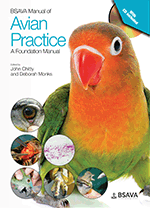
Full text loading...

The keeping of birds is as old as civilized man, and in recent generations understanding of the welfare, husbandry and nutritional needs of birds has advanced significantly. This has led to considerable legislation concerning which species may be kept in captivity; dimensions and construction of enclosures or cages; as well as transport, breeding and slaughter. However, there remains considerable controversy regarding the ethics of confining many types of bird.
Husbandry, Page 1 of 1
< Previous page | Next page > /docserver/preview/fulltext/10.22233/9781910443323/9781910443323.3-1.gif

Full text loading...






























